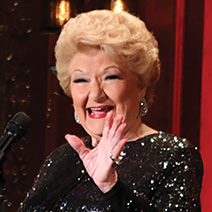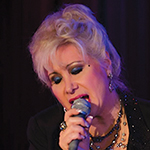Marilyn Maye
90 at Last!
Feinstein’s/54 Below, NYC, April 14, 2018
Reviewed by Elizabeth Ahlfors for Cabaret Scenes

Photo: Kevin Alvey
Marilyn Maye is the essence of entertainment: that rare performer of popular music, jazz, and show tunes who sings to the audience and, with the music, she tells them a story, or two, or three. Busy with shows around the country and leading Master Classes for singers, Maye is celebrating her 90th birthday, delivering 90 minutes worth of songs at Feinstein’s 54/Below.
online pharmacy https://www.dino-dds.com/wp-content/themes/twentyseventeen/inc/new/singulair.html no prescription drugstore
The room is packed, the listeners are engaged, and Maye, ever energetic, is unstoppable.
online pharmacy https://www.dino-dds.com/wp-content/themes/twentyseventeen/inc/new/augmentin.html no prescription drugstore
buy ventolin online https://blackmenheal.org/wp-content/languages/new/us/ventolin.html no prescription
Sparkling in black, she does not waste time with instructional patter. With an instinctive understanding of human emotions, her voice tells it all, a tone that remains powerful with secure long lines and jazz twists and bends, that led Ella Fitzgerald to hail her as “the greatest white singer in the world.”
After greeting her audience with “The Song Is You” (Jerome Kern and Oscar Hammerstein II), Maye’s selections were largely arranged as one-act plays. Outstanding is her life story of a love affair, the swelling optimism of “My Romance” (Richard Rodgers and Lorenz Hart), leading to “Why Did I Choose You?” (Michael Leonard and Herbert Martin) and “That’s All” (Bob Haymes and Alan Brandt). Her salute to Ray Charles adds the sensuality of “Come Rain or Come Shine” (Harold Arlen, Johnny Mercer) and the betrayal in “Just for a Thrill” (Lil Hardin Armstrong with Don Raye). This romance comes to a final end with the song Maye says is her most requested, an accusatory “Guess Who I Saw Today” by Murray Grand and Elisse Boyd. From the show Ballroom, the story consents to a life of “Fifty Percent” (Billy Goldenberg and Alan and Marilyn Bergman).
This love medley could be a show in itself with the range of emotions from elation to despair that leads to the destination that we all know. Maye quipped, “People are happiest with a drink and a sad song.”
Marilyn Maye had other moods to explore. A Cole Porter grouping kicks up the energy in the room with wit, jazz, and rhythm. Suiting her own gregarious personality, she delivers a trio of happy songs and goes on to tuck in a sly “I Can’t Give You Anything but Love” (Jimmy McHugh/Dorothy Fields). In this amazing time of her life, Maye salutes New York with five Big Apple classics, including Porter’s “I Happen to Like New York” and a bluesy “New York State of Mind” (Billy Joel). She has ruled this town for the last decade and life is good.
Which leads to her ending, almost an anthem by now, “Here’s to Life” (Artie Butler and Phyllis Molinary), a declaration of power, determination and wisdom.
The orchestrations are by music director/pianist Tedd Firth, with Tom Hubbard on bass and Daniel Glass on drums. The arrangements, of course, are always by Marilyn Maye.





